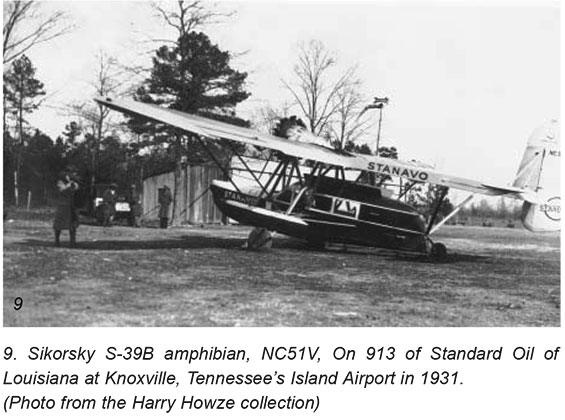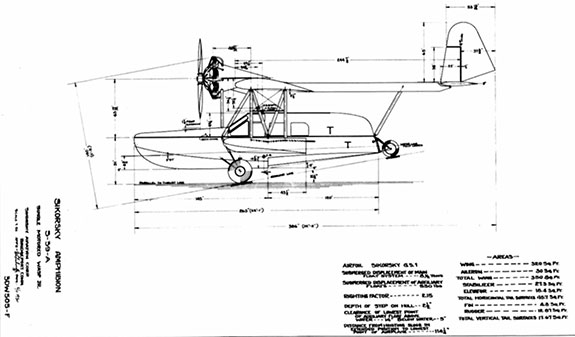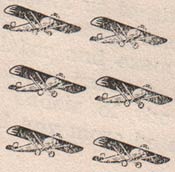|
This airplane was a Sikorsky S-39B, S/N 913, manufactured in 1931. It was purchased by Standard Oil of Louisiana. It was signed in the Floyd Bennett Field Register on March 4, 1933 at 11:00AM flown solo by J. Nelson Kelly. Kelly arrived at Floyd Bennett Field from Miami, FL. No reason was given for the flight. At his link, you'll find that Kelly was the manager of the Floyd Bennett Field at the time he signed his name in the Register. Below is a synopsis of the airplane's life. Although the synopsis suggests it was registered until 1947, it probably wasn't flown after 1941.
Sikorsky NC51V, Date Unknown (Source: Woodling via Historical Aviation Album)
 |
There is a good chance that when Kelly brought it to Floyd Bennett Field in 1933 it looked much like it does below in its Standard Oil livery. Other than its presence in the Register on March 4, 1933, nothing can be added to the possibility that it was, "used out of the United States by Standard Oil from 1933 through 1935." If it wasn't, and it remained in New York instead, it was in position to be taken over by Harriman in 1936.
Sikorsky NC51V, Knoxville, TN, 1931 (Source: AAHS via Woodling)
 |
According to Juptner, volume 4, page 234, the S-39B model was a single, parasol-winged, single-engine (300HP Pratt & Whitney Wasp) amphibious aircraft. The engine was mounted on the wing. The hull was all-metal, with main wheels that were retractable for water landing. The large, steerable tail wheel was not retractable and acted as a rudder during water operations. In addition, the main wheels could be raised or lowered together or separately, and thus could be used for differential control in water operations during windy conditions. Below is a schematic of the S-39A type, which was similar to the B-model.
Sikorsky Model S-39 Type Schematic (Source: Link)
 |
Below is a starboard quarter photograph of NC51V.
Sikorsky S-39B NC51V, Date & Location Unknown (Source: AAHS via Woodling)
 |
S/N Model Registration(s)
901 S-39A/B NC887W
902 S-39B NC888W
903 S-39A/B NC802Y
904 S-39A/B NC803W
906 S-39B NC896W
907 S-39A/B NC805W
912 S-39B NC50V
913 S-39B NC51V
915 S-39B NC53V
916 S-39B NC54V
917 S-39B NC55V
920 S-39B NC58V |
The Sikorsky S-39B could carry a pilot, four 165-pound people and 57 pounds of baggage (not much by today's standards). It carried 65 gallons of fuel, which, at a fuel burn of 15 gallons/hour, gave it an endurance of about four hours. At a cruise speed of 100MPH the pilot could flight plan 400 mile legs.
A dozen B-models were built as in the table, left, abridged from the link. According to Juptner, NC51V was converted to a S-39C model at some point in time.
---o0o---
THIS PAGE UPLOADED: 01/07/17 REVISED:
|





